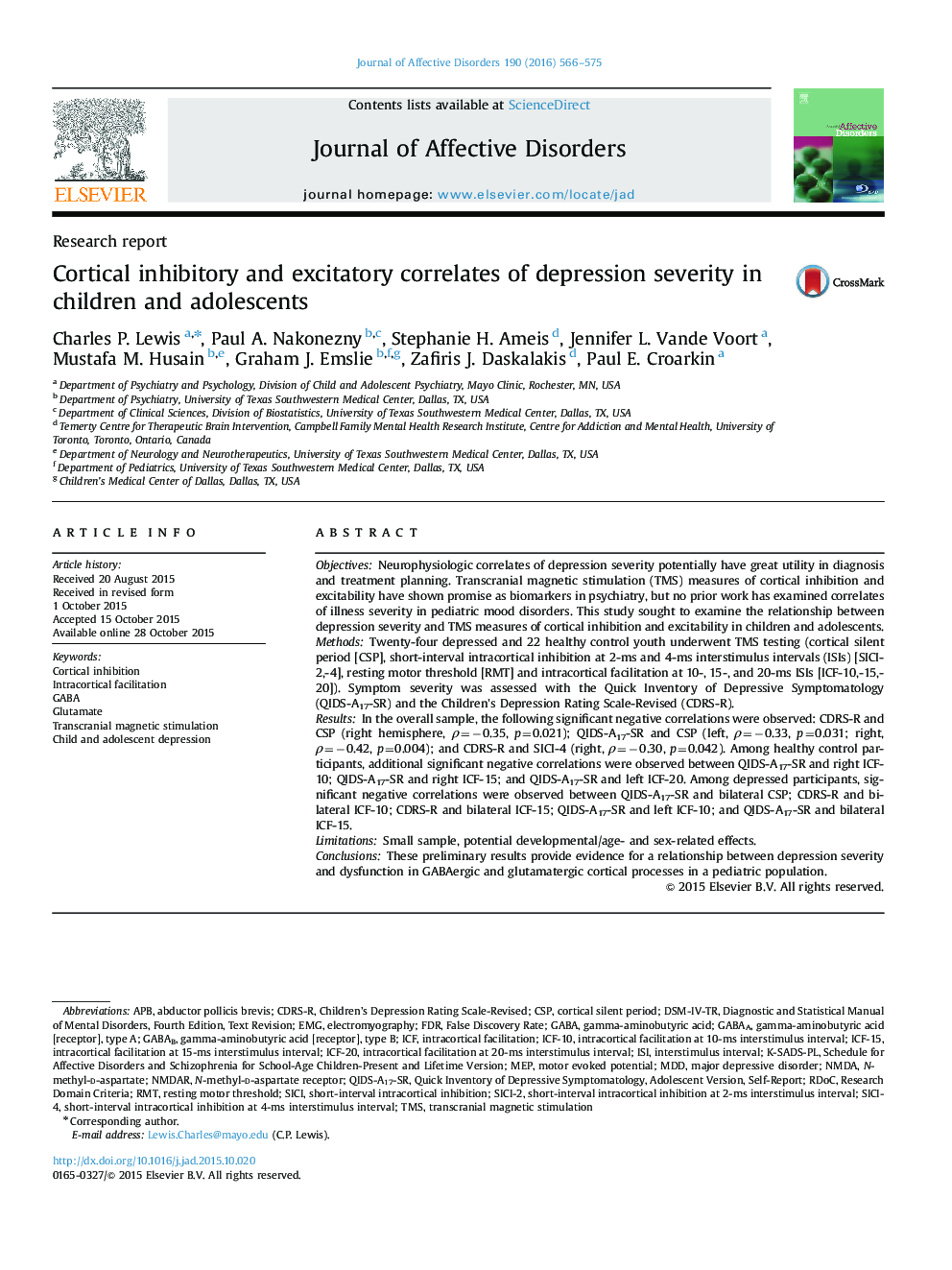| Article ID | Journal | Published Year | Pages | File Type |
|---|---|---|---|---|
| 6230789 | Journal of Affective Disorders | 2016 | 10 Pages |
â¢Neurophysiologic correlates of depression severity were examined via TMS.â¢The sample consisted of unmedicated youth with major depression and healthy controls.â¢Depression severity showed an association with inhibitory (GABAergic) TMS measures.â¢Excitatory (glutamatergic) measures showed associations with depression severity.â¢The majority of significant relationships were observed in the depressed group.
ObjectivesNeurophysiologic correlates of depression severity potentially have great utility in diagnosis and treatment planning. Transcranial magnetic stimulation (TMS) measures of cortical inhibition and excitability have shown promise as biomarkers in psychiatry, but no prior work has examined correlates of illness severity in pediatric mood disorders. This study sought to examine the relationship between depression severity and TMS measures of cortical inhibition and excitability in children and adolescents.MethodsTwenty-four depressed and 22 healthy control youth underwent TMS testing (cortical silent period [CSP], short-interval intracortical inhibition at 2-ms and 4-ms interstimulus intervals (ISIs) [SICI-2,-4], resting motor threshold [RMT] and intracortical facilitation at 10-, 15-, and 20-ms ISIs [ICF-10,-15,-20]). Symptom severity was assessed with the Quick Inventory of Depressive Symptomatology (QIDS-A17-SR) and the Children's Depression Rating Scale-Revised (CDRS-R).ResultsIn the overall sample, the following significant negative correlations were observed: CDRS-R and CSP (right hemisphere, Ï=â0.35, p=0.021); QIDS-A17-SR and CSP (left, Ï=â0.33, p=0.031; right, Ï=â0.42, p=0.004); and CDRS-R and SICI-4 (right, Ï=â0.30, p=0.042). Among healthy control participants, additional significant negative correlations were observed between QIDS-A17-SR and right ICF-10; QIDS-A17-SR and right ICF-15; and QIDS-A17-SR and left ICF-20. Among depressed participants, significant negative correlations were observed between QIDS-A17-SR and bilateral CSP; CDRS-R and bilateral ICF-10; CDRS-R and bilateral ICF-15; QIDS-A17-SR and left ICF-10; and QIDS-A17-SR and bilateral ICF-15.LimitationsSmall sample, potential developmental/age- and sex-related effects.ConclusionsThese preliminary results provide evidence for a relationship between depression severity and dysfunction in GABAergic and glutamatergic cortical processes in a pediatric population.
